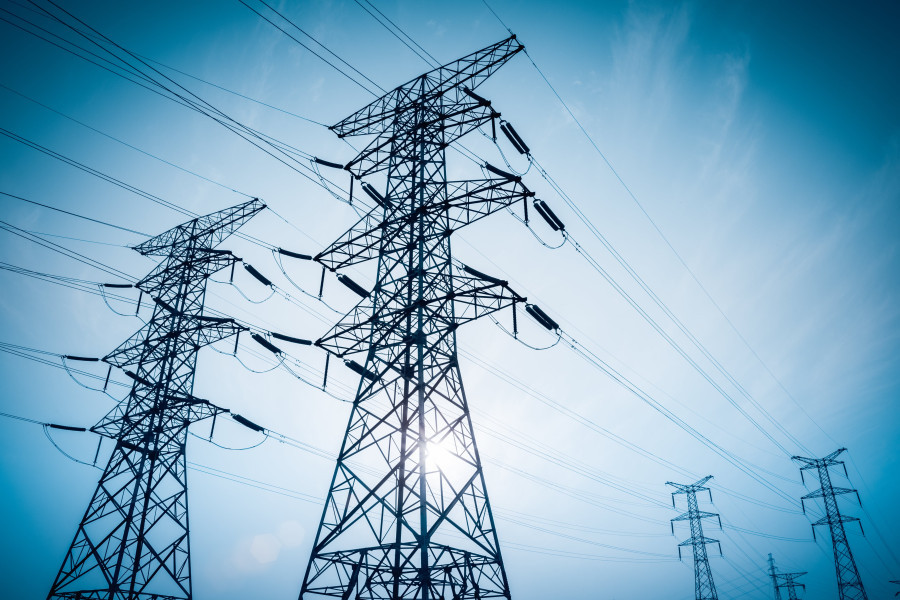National
Power export earns Nepal Rs12 billion this wet season
Electricity emerges as one of the key exports as utility eyes sales worth Rs16 billion in the current fiscal year.
Prithvi Man Shrestha
Nepal has sold electricity worth nearly Rs12 billion to India till mid-October in the ongoing wet season as earnings from the export continue to grow over the last few years.
The Nepal Electricity Authority (NEA) had resumed power export to the southern neighbour on June 11.
Electricity worth Rs11.8 billion was exported as of October 16. Since the beginning of the fiscal year 2023-24 in mid-July, electricity worth Rs9.64 billion has been sold in India’s power market, the utility said.
Electricity export has contributed to a reduction in trade deficit with India and helped boost Nepal’s foreign exchange reserves, the NEA said in a statement.
Compared to other goods exported in the fiscal year 2022-23, overall export earning from electricity in the wet season stands third. Nepal exported palm oil worth Rs20.5 billion, followed by yarn, with its exports reaching as high as Rs20.20 billion in the last fiscal year, according to the Trade and Export Promotion Centre.
Then come earnings from electricity export this wet season, followed by the export of woollen carpets whose total worth in the past fiscal year stood at Rs11.50 billion.
NEA Managing Director Kul Man Ghising said the power export income in the current fiscal year 2023-24 could be as much as Rs16 billion. “We had reached out to Indian authorities for their approval for the export of an additional 100MW to India,” Ghising said. “As India delayed its reply, we re-sent the list of the projects for approval.”
NEA officials said the country's power export would continue to grow in the days to come.
“Growing power export from Nepal is important not only to boost our financial status but also to power the clean energy transition in the neighbouring country,” said Prabal Adhikari, power trade director at the NEA.
According to officials, key reasons for Nepal’s potential growth in electricity export are: growing generation of energy with power purchase agreements signed with independent power producers for 8,500MW so far; work underway to build an additional cross-border power line; long-term power export agreement likely to be signed with India soon; regulatory facilitation; net zero goals (of South Asian countries); and the prospect of market expansion in Bangladesh, Bhutan, India and Nepal (BBIN) sub-region.
The southern neighbour has also agreed to facilitate Nepal’s power export to Bangladesh as Kathmandu and Dhaka are working on the trade of 40MW power.
The NEA said that it has also been receiving relatively good prices for electricity in the Indian market.
According to the state-owned power utility, it got an average of Rs9.67 per unit from June to mid-July while an average of Rs10.27 per unit was received from mid-July to mid-October.
In early November 2021, New Delhi had, for the first time, allowed Nepal to sell electricity in the Indian market following a competitive bidding process.
Initially, the southern neighbour had allowed Nepal to sell 39MW of electricity produced by the 24MW Trishuli hydropower project and the 15MW Devighat hydel project. But since early June last year, Nepal has the permission to sell upto 364 MW of electricity generated by six hydroelectric projects.
Then, Nepal was permitted to export 452.6MW from 10 power projects and an additional 180MW was allowed to export from September this year.
Adhikari said that he believes more markets would open up for Nepal in the coming years. India has already committed to buying as much as 10,000MW in the next 10 years. “As the potential for quantum of power to be exported will continue to grow, we have to pay attention to strengthening our cross-border connections,” he said.
Lately, India has opened multiple channels to enable Nepal’s export of power, even though it has been conservative in allowing exports in large quantities in a single window.
When India allowed Nepal to sell an additional 180MW of power in September, it also opened the door for selling 110MW under a five-year deal. In late September, India allowed Nepal to sell the electricity generated by two hydropower projects in its real-time energy market too.
According to the NEA, the Central Electricity Authority of India has allowed trading of 44 MW of electricity generated by the 19.4 MW Lower Modi and 24.25 MW Kabeli B-1 hydropower projects in the real-time market in the first phase.




 6.1°C Kathmandu
6.1°C Kathmandu










%20(1).jpg&w=300&height=200)




